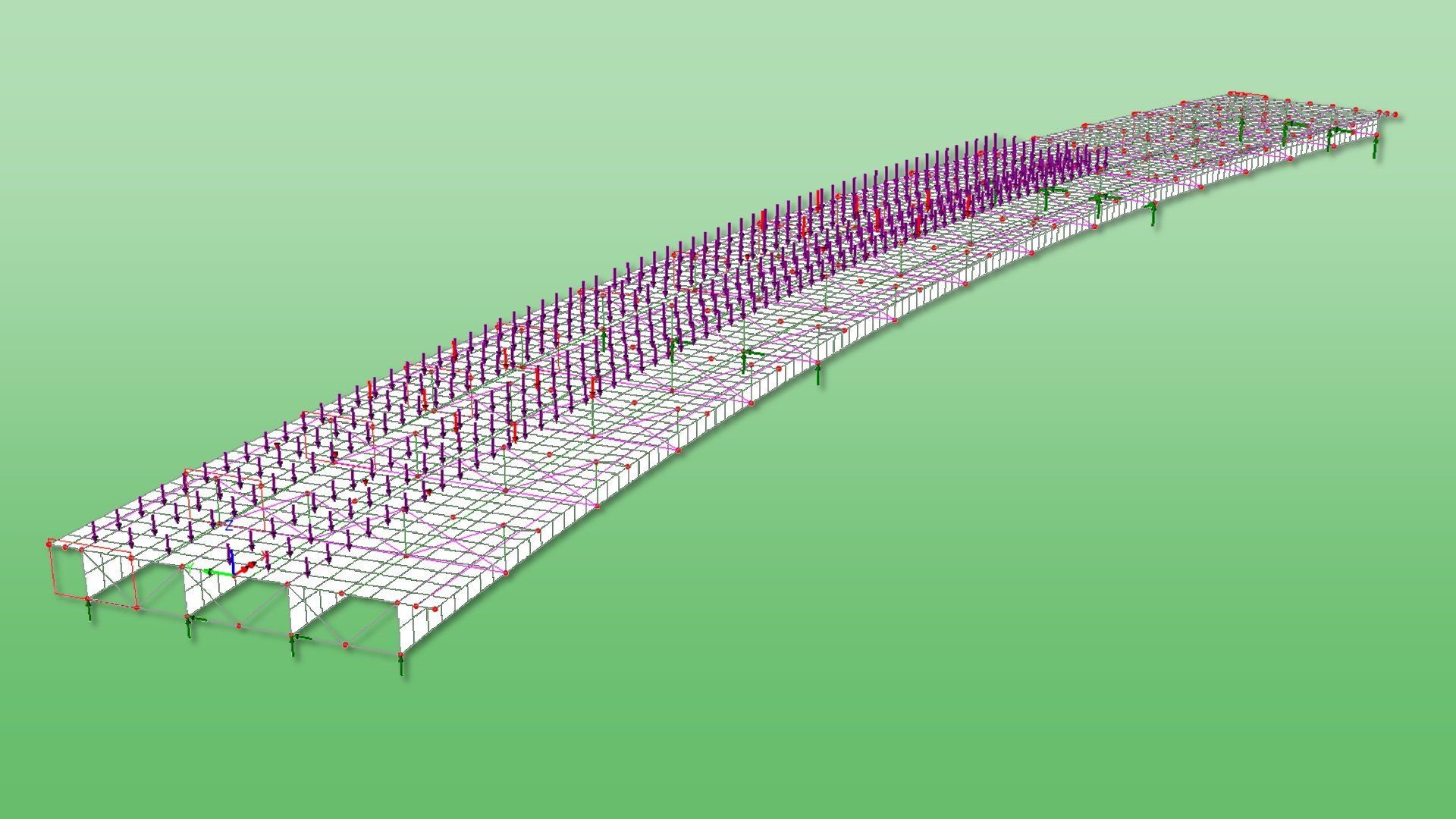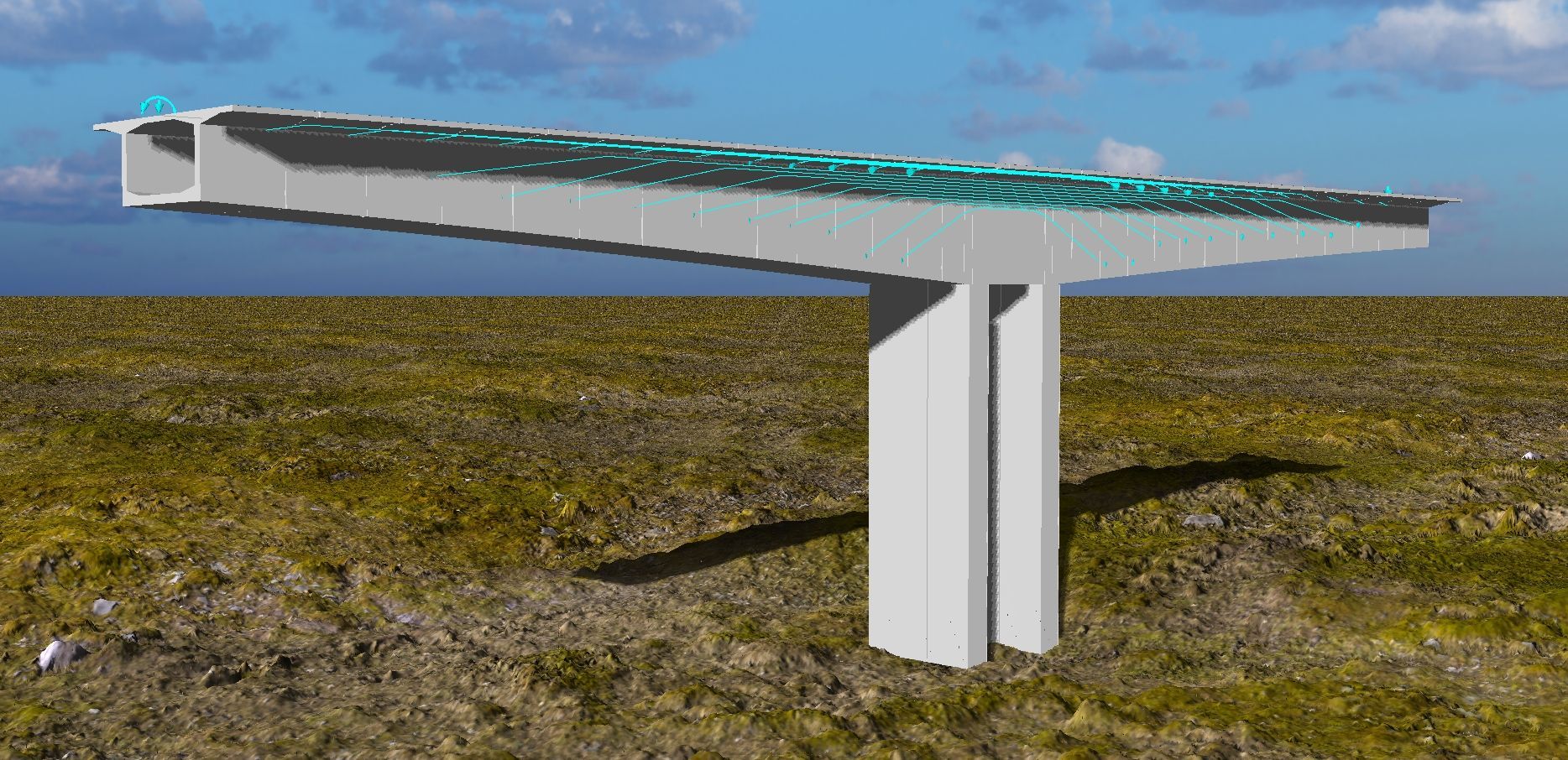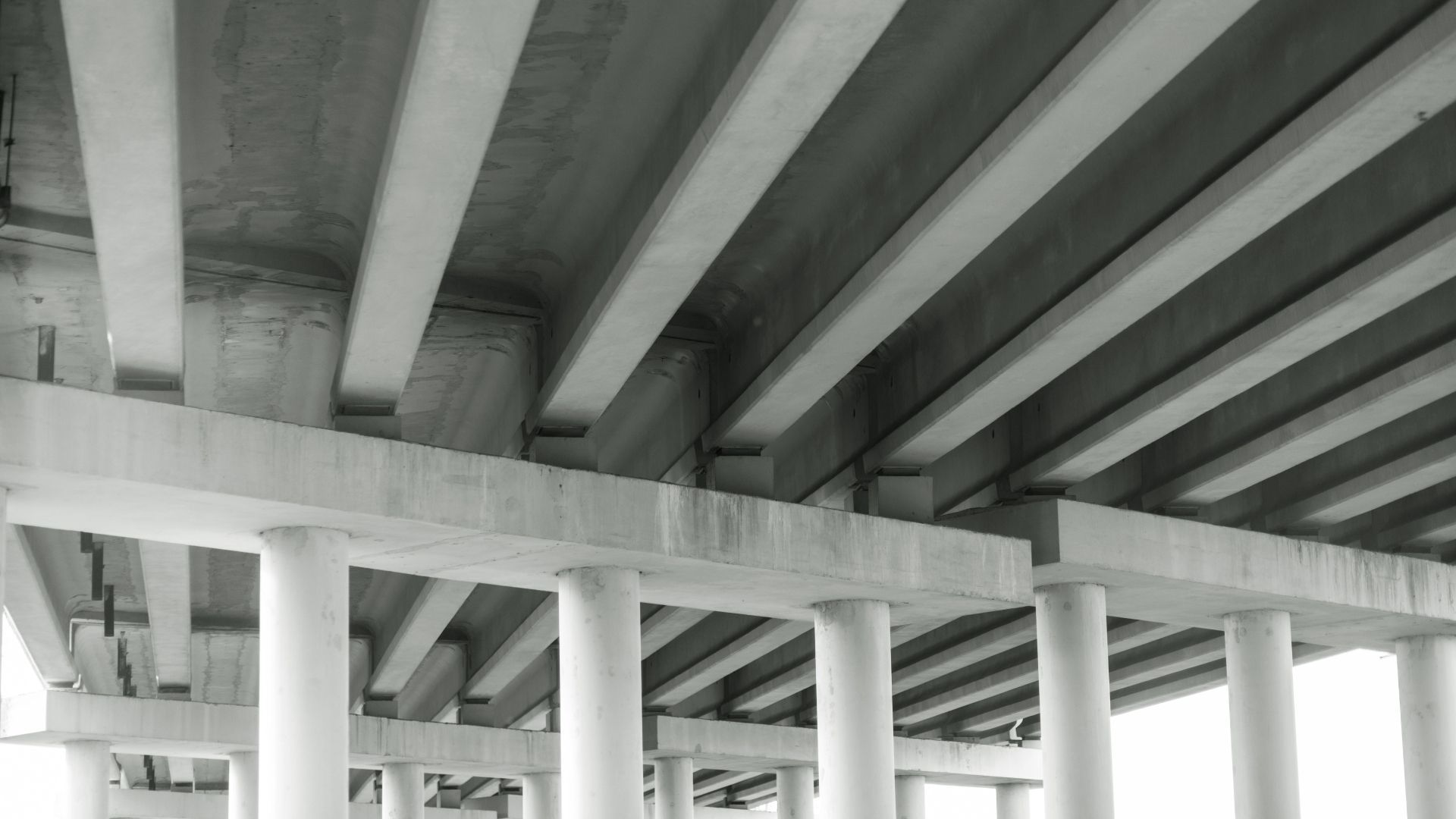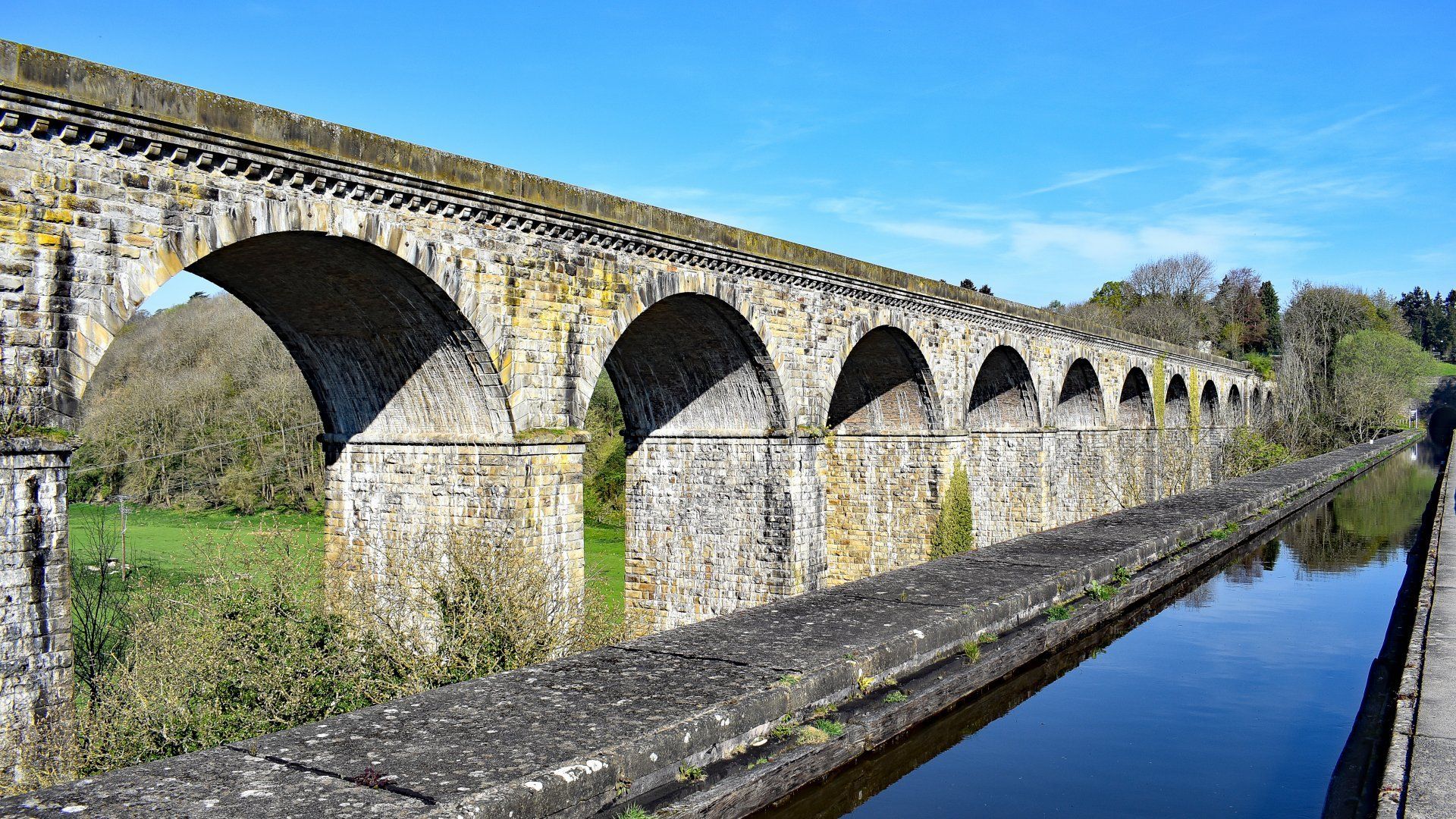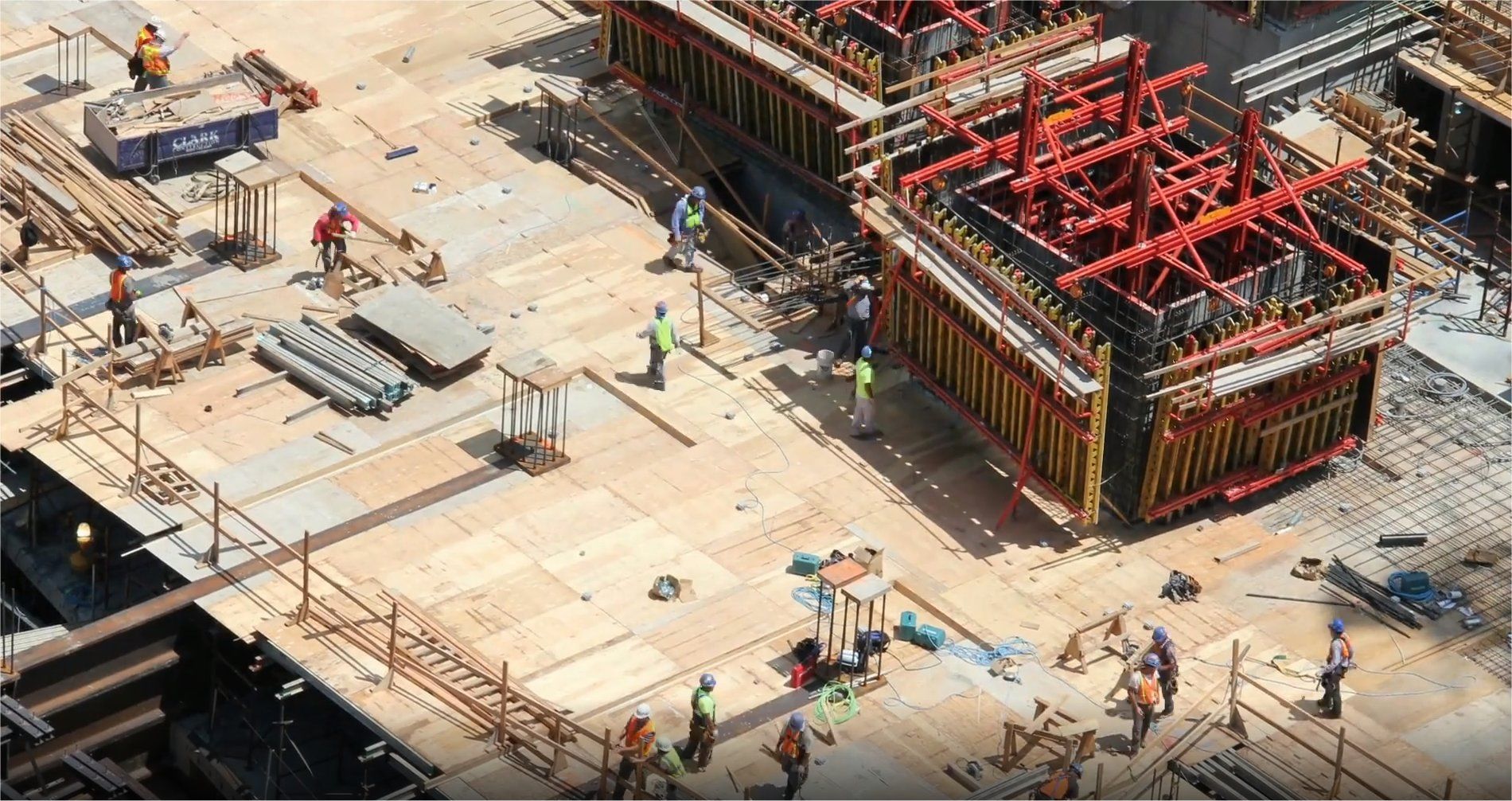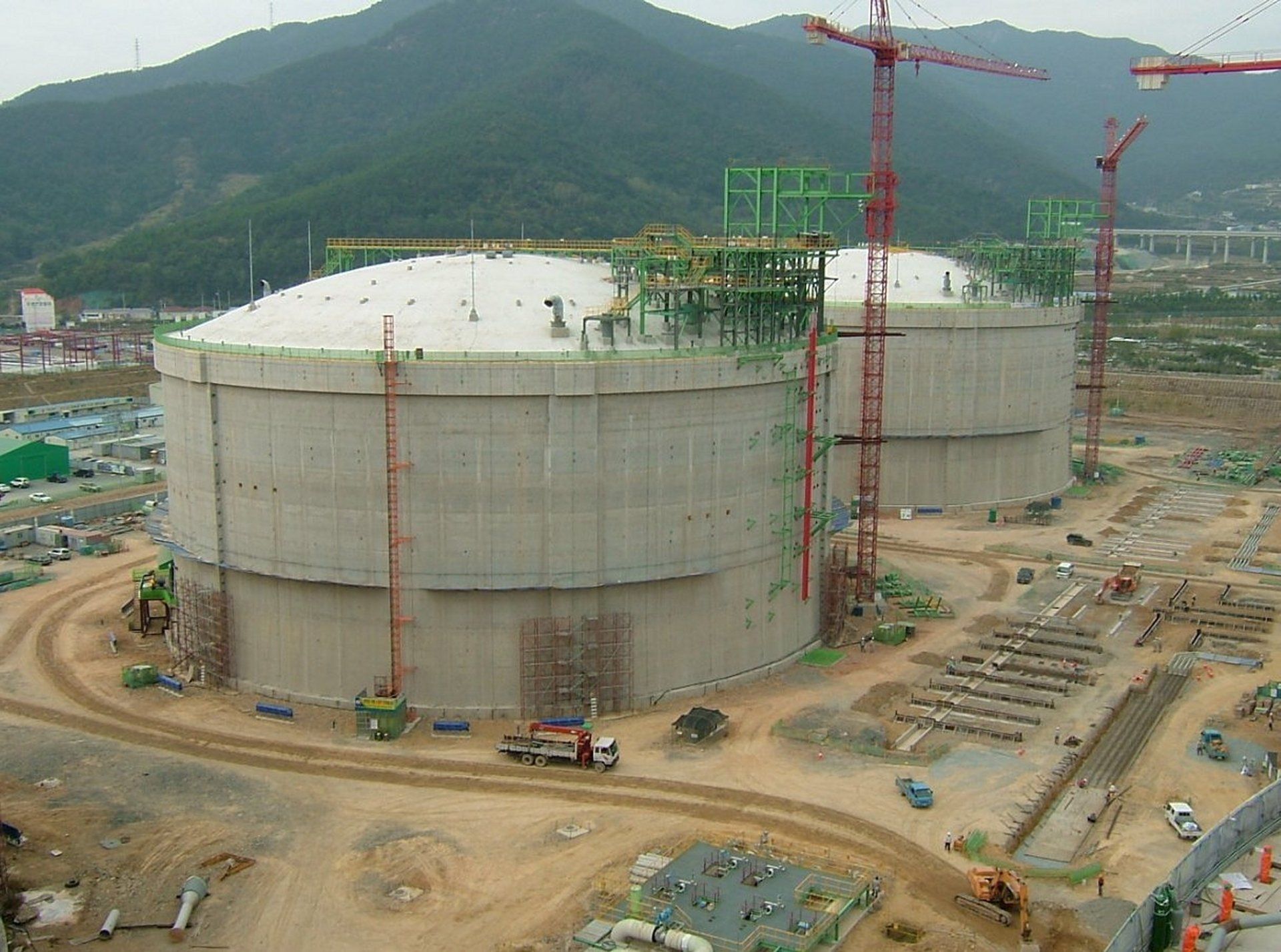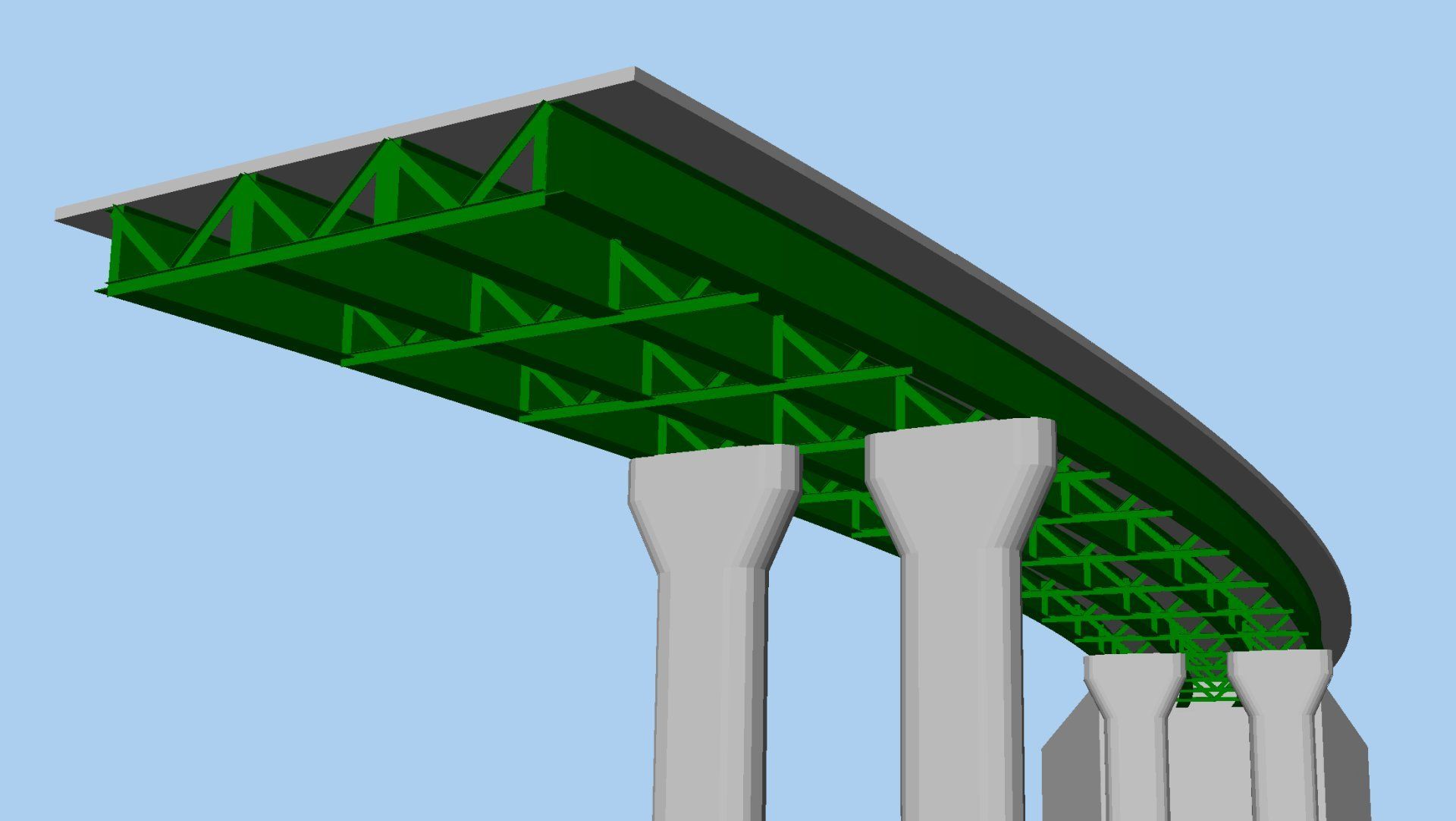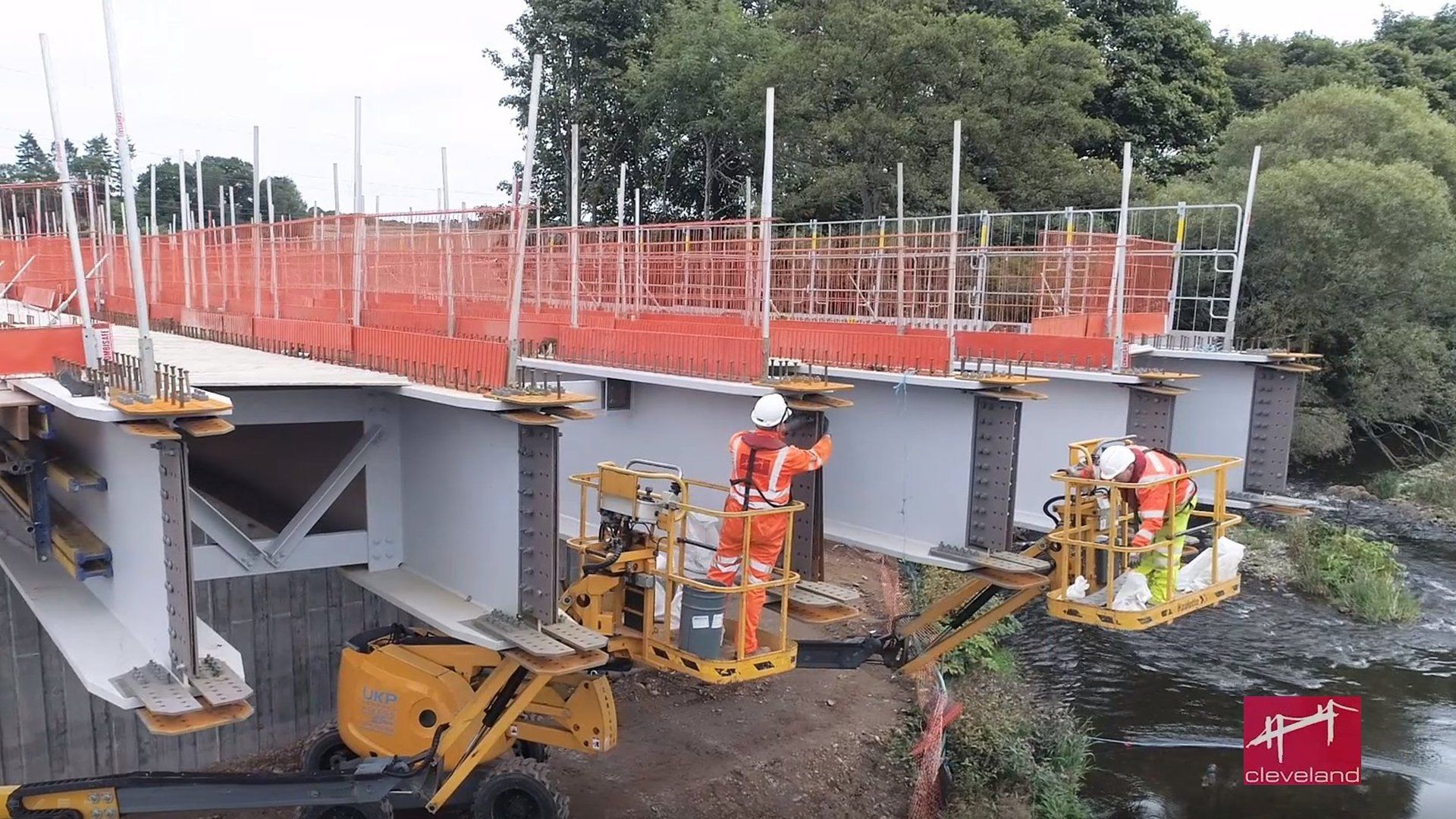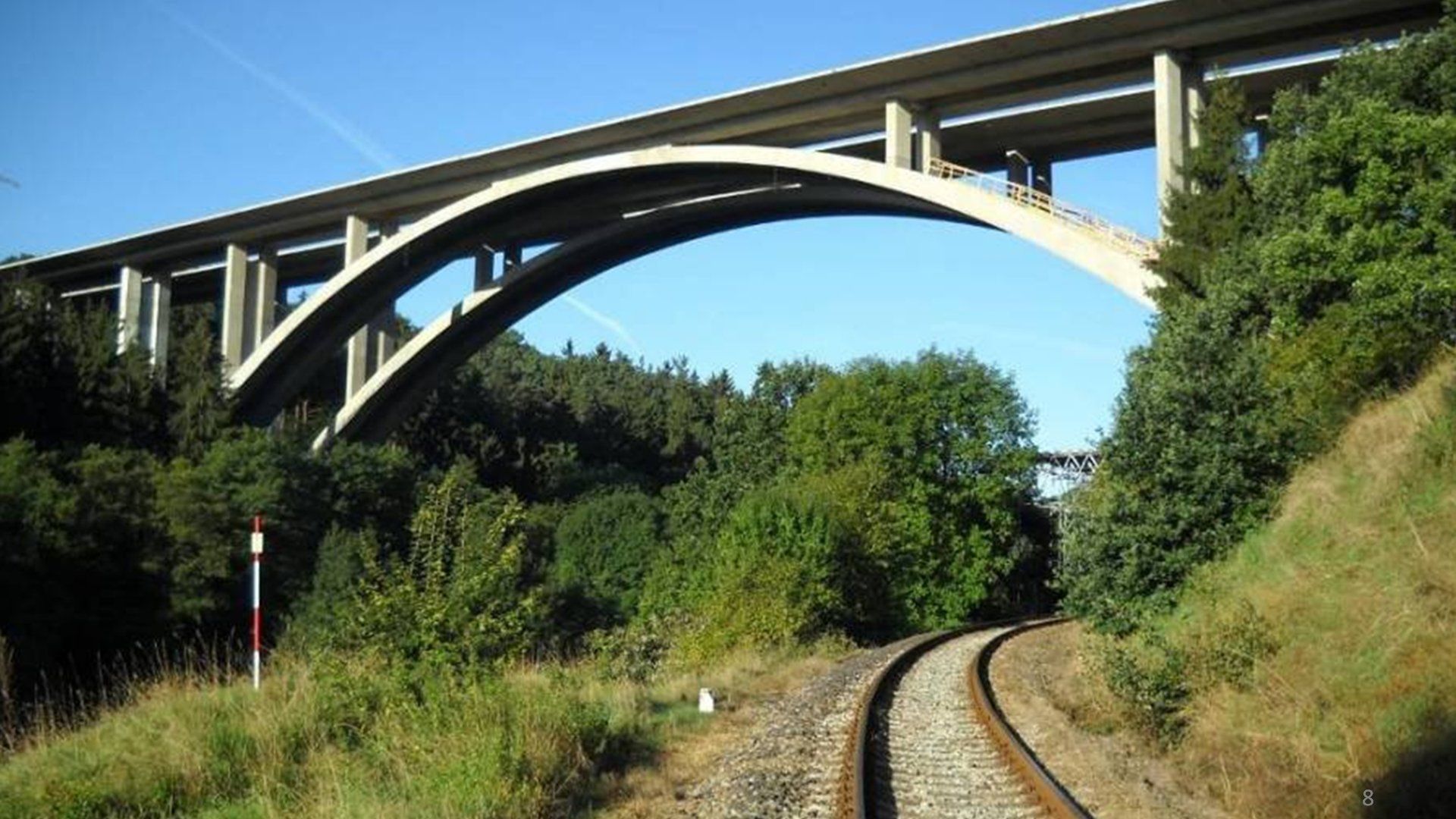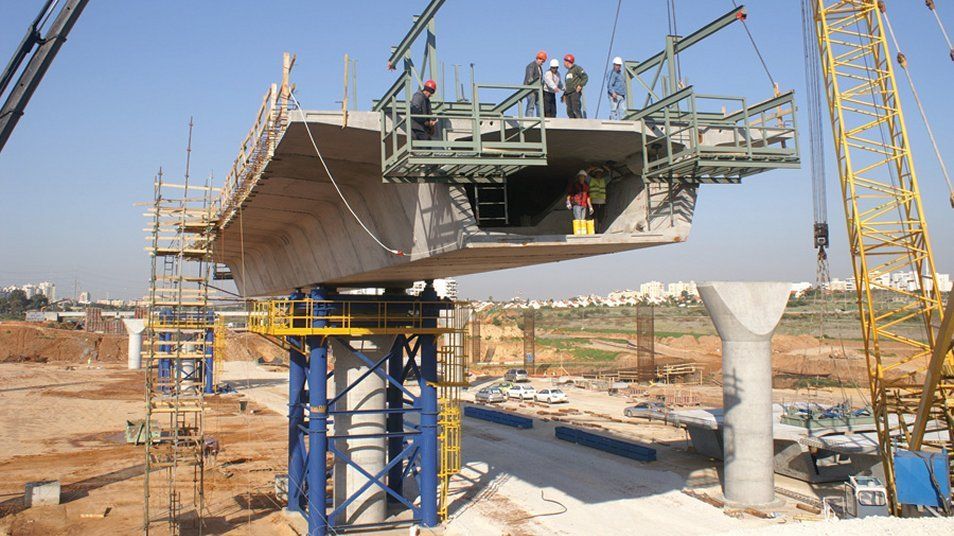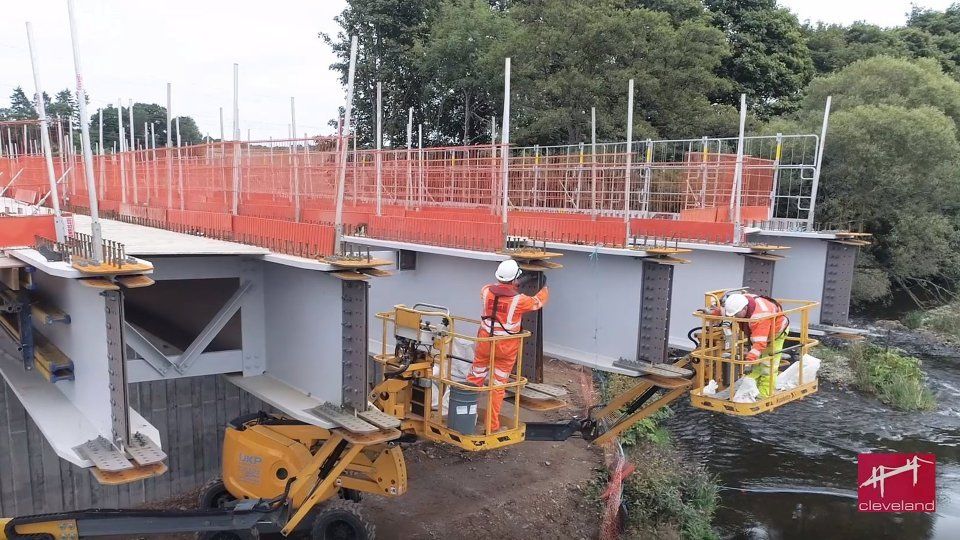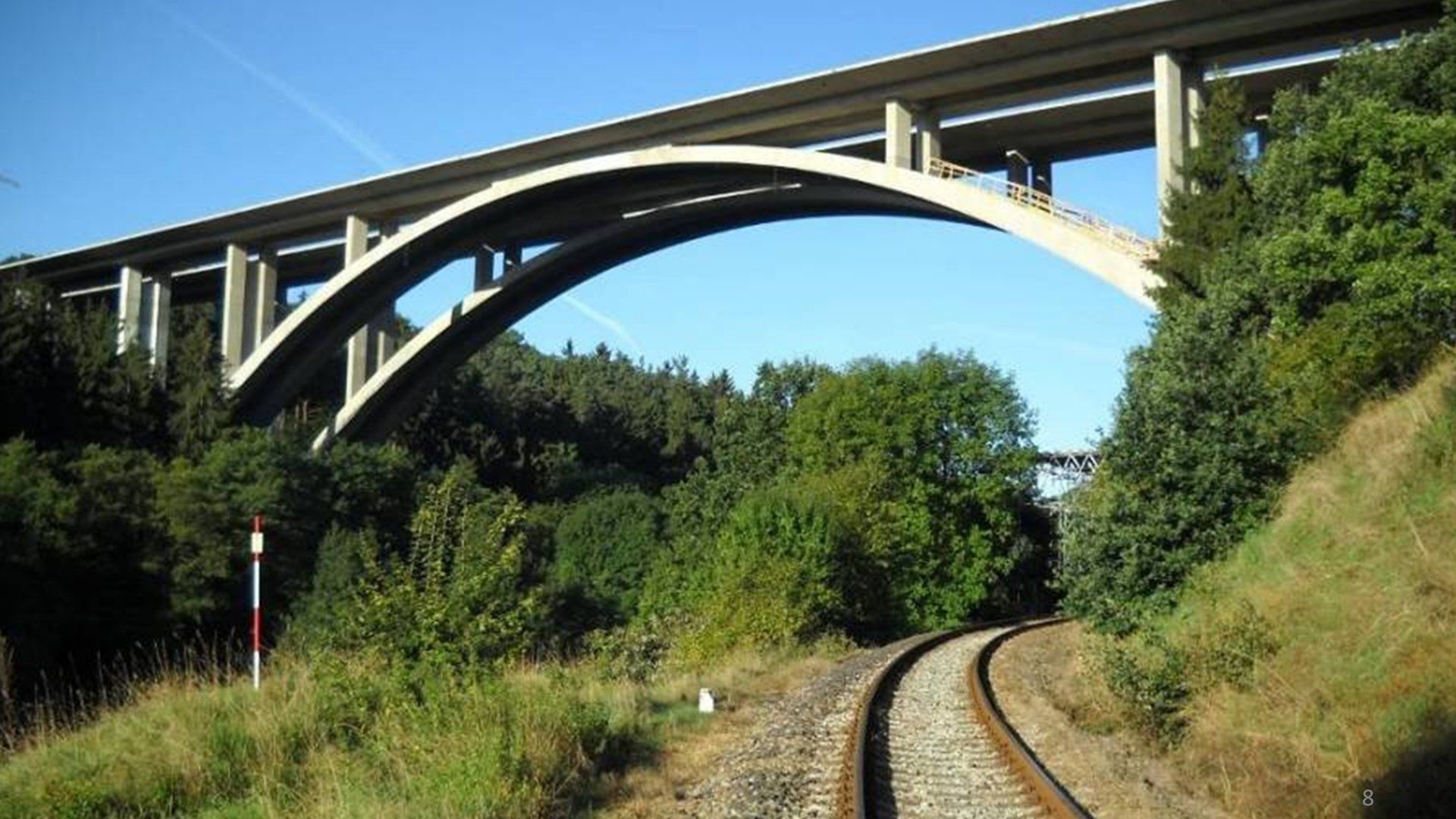- Home
- Discover...
- More about...
- Geotechnical / SSI tools
- Connecting with others
- Grillage modelling
- Steel frame design
- RC slab / wall design
- RC frame design
- Composite deck design
- Steel composite bridge wizard
- Post-tensioned bridge wizard
- Masonry bridge wizard
- Advanced concrete modelling
- Prestress / post-tensioning
- Load optimisation and combinations
- Rail infrastructure modelling
- LNG tank system
- Version 21.0 in detail
- Media...
- Blog
- Contact Us
Traffic Load Optimisation and Combinations
The LUSAS Vehicle Load Optimisation (VLO) and Rail Load Optimisation (RLO) software options extend the static and moving vehicle loading capabilities of LUSAS Bridge.
Automated load combinations speed-up the development of load combinations for supported codes of practice.
New in Version 21
- Traffic loading effects for any results of interest: moments, shears, torsions, stresses.
- One envelope covering all of your structure. No nodes to choose, no loadcases to solve, no comparisons to make. Combine the one envelope with dead loads and other loads for design effects everywhere.
- Rationalised vehicle placement methods produce results faster.

Vehicle load optimisation
Speed the calculation of vehicle load patterns
Obtain critical highway vehicle loading patterns on bridges to many international codes of practice and apply these loading patterns to LUSAS models.
Apply loads to any structural system from simple beam and grillage models to shells and volumes.
Greatly simplifies the evaluation of worst load position, reduces the amount of time spent generating models, and leads to more efficient and economic design, assessment or load rating of bridge structures.
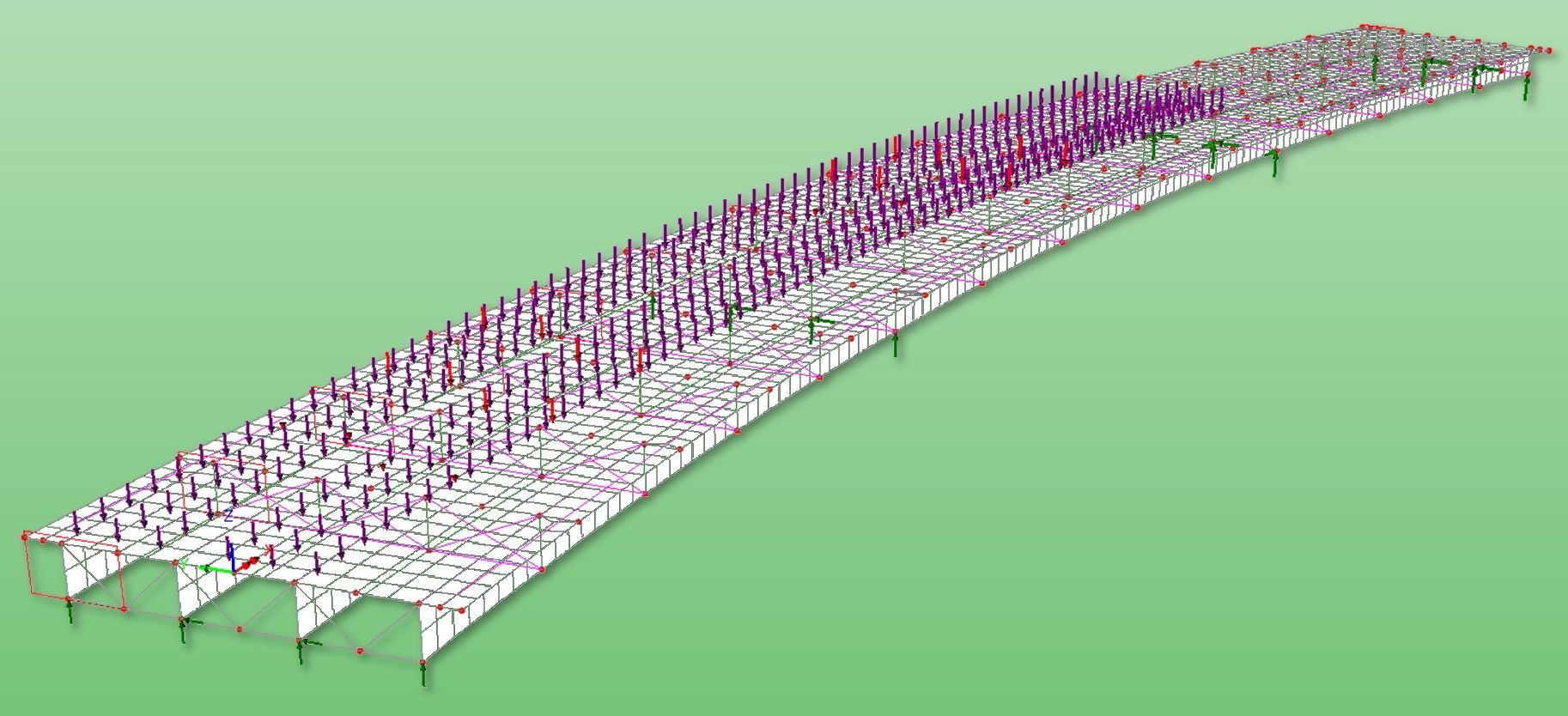
How it's done - for locations of interest
User specified locations of interest can be evaluated, or whole structure results may be obtained.
- Australia: AS5100-2: 2004, AS5100-7: 2004 (Austroads)
- Canada CAN/CSA-S6-06 (Design)
- China: JTG D62-2015
- Denmark: DS/EN 1991:2 DK NA:2015
- Europe: EN1991-2 Recommended values
- Finland: LO 24/2014
- India - IRC:6-2017
- Ireland: EN1991-2
- Italy: EN1991-2
- New Zealand (Transit New Zealand Bridge Manual)
- Norway: NS EN1991-2.2004 NA 2010 + NA-rundsskiv 07-2015
- Poland: EN1991-2
- Saudi Arabia: MOMRA Bridges Design Specifications
- Sweden: EN1991-2 (2009), EN1991-2 (2011), TDOK 2013:0267 Version 3.0
- South Africa: TMH7
- United Kingdom: EN1991-2, BA34/90, BD21/01 including Annexes D and E, BD37/01 (Road+Rail), BD86/11, BS5400 Rail Railtrack document RT/CE/025, CS 454 Assessment of Highway Structures and Bridges, and CS 458 rev 0 with ALL Model 1.
- United States of America: AASHTO LRFD (7th and 6th Edition), AASHTO Standard Specifications (17th Edition, and AASHTO MBE Section 6A (LRFR).
Show me...
Whole structure results
Obtain traffic loading effects for any results of interest: moments, shears, torsions, stresses - anywhere on your structure. One envelope covering all of your structure. No locations of interest to specify, no loadcases to solve, no comparisons to make.
Combine the one envelope with dead loads and other loads for design effects everywhere. (Version 21.0)
Show me...
Influence analysis and enhanced traffic load optimisation
Show me...
New bridge assessment loading codes in Version 19.1
Rail load optimisation
- Eurocode EN1991-2 (Recommended values) and National Annexes for Denmark, Finland, Ireland, Italy, Norway, Poland and the United Kingdom
- International UIC Leaflet 776-1 (5th Edition)
- United Kingdom NR-GN-CIV-025
- United States of America AREMA Manual for Railway Engineering
(Concrete and |Steel Structures)- added in Version 18.1
Tracks and track layouts
- Define individual track layouts to specify particular track loading scenarios
- Define segments of track by coordinate input, from spreadsheet data, or from selected lines and arcs drawn to represent track centrelines in the LUSAS model.
- Specify minimum radii of intersecting tracks
- Visualise individual track layouts on the model.

Direct Method Influence Analysis for Rail use

View results on model

Show me...
Rail Load Optimisation
Automated load combinations
Faster combination building
Speed the development of load combinations with automation according to codes of practice.
Apply to buildings, bridges, foundations and other infrastructure.Apply these to buildings, bridges, foundations and other infrastructure.
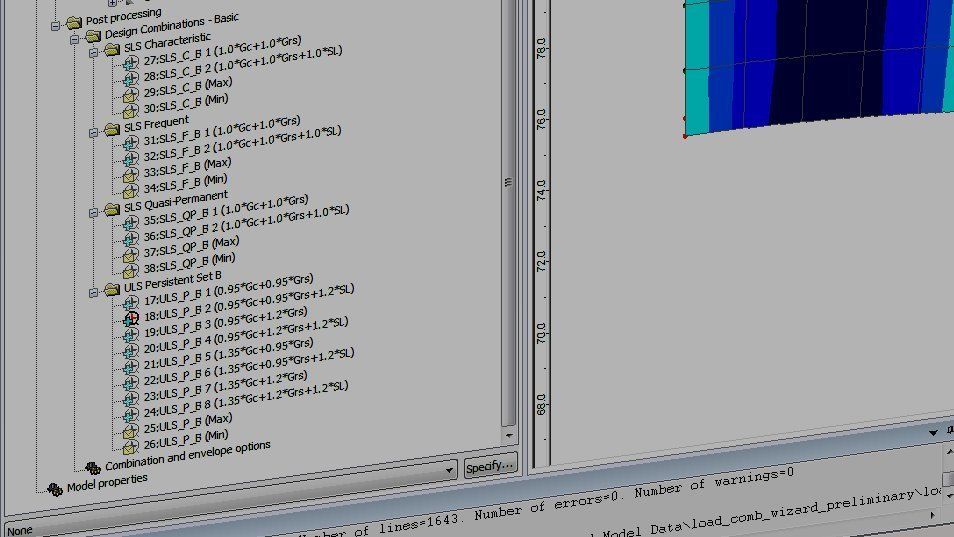
Flexibility
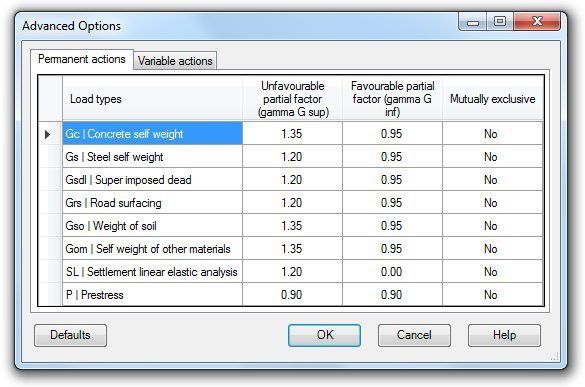
Supported codes of practice
- Australia
- AS/NZS 1170
- Canada - CSA-S6-14
- China - JTG D60-2004
- Europe - EN1990 Buildings - National Annexes for Finland, Ireland, Italy, Norway, Recommended Values , Sweden, UK.
- Europe - EN1990 (Footbridges) - National Annexes for Ireland, Italy, Recommended Values , UK.
- Europe - EN1990 (Highway Bridges)
- National Annexes for Ireland, Italy, Recommended Values , UK.
- Europe EN1990 - EN1990 (Railway Bridges)
- National Annexes for Ireland, Recommended Values , UK,
- India
- IRC: 6-2017
- New Zealand - AS/NZS 1170
- United Kingdom - BD21/01, BD37/01 , CS 454 , GB 50009 - 2012
- United States of America - AASHTO 7th Edition, 8th Edition
In Version 21...
Learn more about...
-
Post-tensioned Bridge Wizard
Button -
Connecting with others
Button -
Grillage modelling
Button -
Masonry Bridge Wizard
Button -
RC Slab / Wall design
Button -
LNG Tank System
Button -
Steel Composite Bridge Wizard
Photo By: John Doe
Button -
Composite Deck Design
Photo By: John Doe
Button -
Geotechnical / SSI
Photo By: John Doe
Button -
Steel frame design
Photo by: John Doe
Button -
RC frame design
Button -
Traffic Load Optimisation
Button -
Prestress / Post-tensioning
Button -
Advanced concrete modelling
Button -
Rail infrastructure modelling
Button
For more information...
- For more details of LUSAS software products visit www.lusas.com
- To download LUSAS software visit the LUSAS User Area of the main website.
- Contact us via our contact form, or use Live chat, if available.

